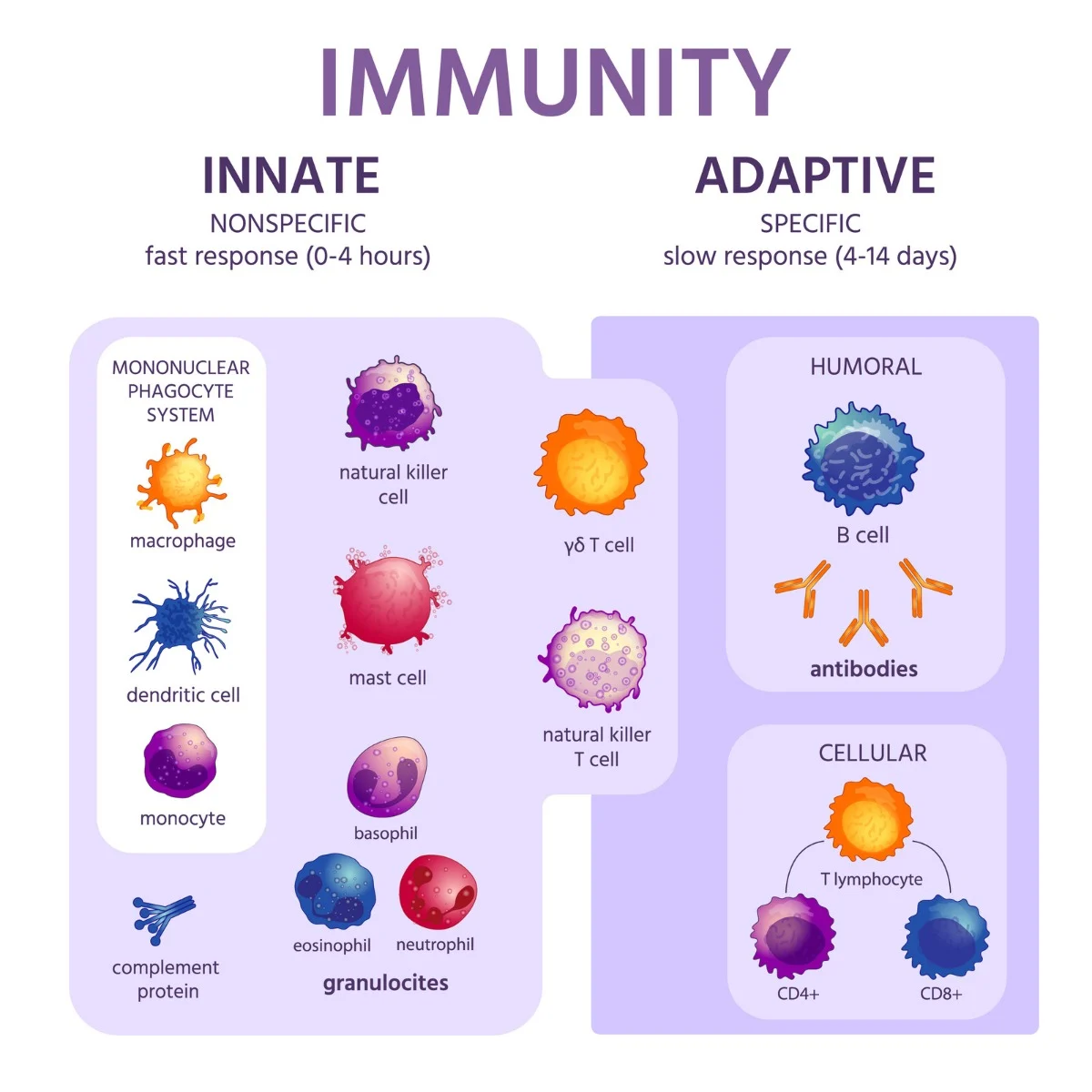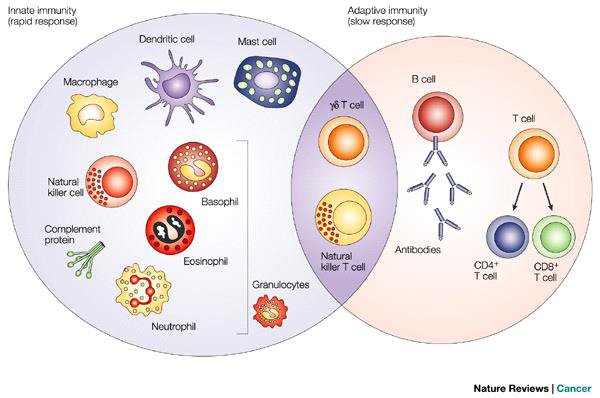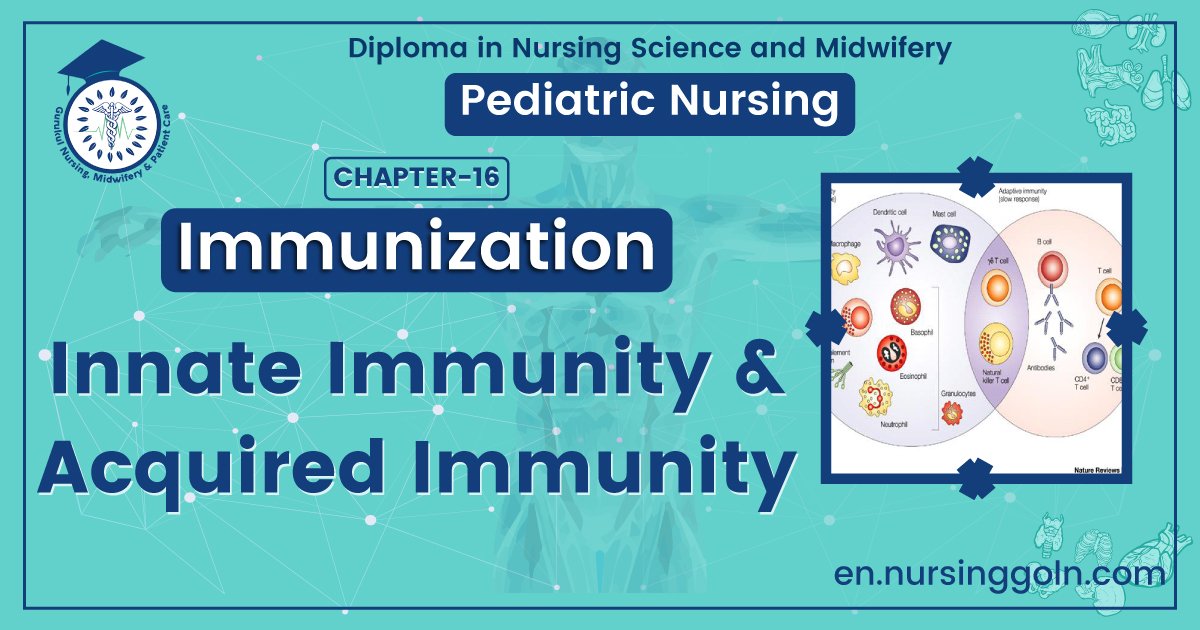Innate Immunity & Acquired Immunity – Health of the children has been considered as the vital importance to all societies because children are the basic resource for the future of humankind. Nursing care of children is concerned for both the health of the children and for the illnesses that affect their growth and development. The increasing complexity of medical and nursing science has created a need for special area of child care, i.e. pediatric nursing.
Pediatric nursing is the specialized area of nursing practice concerning the care of children during wellness and illness. It includes preventive, promotive, curative and rehabilitative care of children. It emphasizes on all round development of body, mind and spirit of the growing individual. Thus, pediatric nursing involves in giving assistance, care and support to the growing and developing children to achieve their individual potential for functioning with fullest capacity.

Innate Immunity & Acquired Immunity
Innate (Non-specific) immunity;
Innate immunity is the resistance of the body against antigen that exists prior to exposure to the antigen (i.e. it is inborn). It is non-specific.
Acquired (Specific) immunity;
Acquired immunity is the resistance of the body against antigen that occurs after exposure to an antigen.
It improves upon repeated exposure, and is specific.
[Ref-LANGE review/15th/479,481]
Differences between Innate & Acquired Immunity:
| Traits | Innate (Non-Specific) Immunity | Acquired (specific) immunity |
| Time of development | Present form birth | Acquired after birth upon contact with antigens |
| Specificity | Non-specific | Specific |
| Response to subsequent exposure of antigen | Initial and subsequent responses are same | Primary and secondary responses differ qualitatively and quantitatively |
| Immunological memory | No immunological memory | There is always immunological memory |
| Present in | Both vertebrates and invertebrates | Only in vertebrates. |
| Mechanical barrier | Present (e.g.- skin & mucous membrane) | Absent. |
| Cells involved | Macrophages, polymorphonuclear leukocytes, natural killer cells. | Predominantly T & B- Lymphocytes. |
[Ref- LANGE review/15th/479+M.R. Choudhury/5th/98]
Components/Factors of Innate Immunity:
Anatomical barriers:
- Mechanical/Physical Factors:
- Keratin layer of intact skin.
- Intact mucous membrane of different organs.
- Bony encasements.
Mechanical removal:
- Mucus and cilia.
- Coughing and sneezing reflexes expel trapped foreign substances.
- Vomiting and diarrhoea.
- The physical flushing action of body fluids.
Chemical Factors:
➤ Pattern-recognition receptors.
➤Antigen non-specific antimicrobial chemicals:
- Low pH of stomach and vagina inhibits growth of many microbes.
- Fatty acids of skin inhibit growth of micro-organisms.
- Acid pH of sweat and sebaceous secretions ->> inhibitory to microorganisms.
- Lysozyme in tears, nasal secretions and saliva ->> degrades peptidoglycan of bacterial cell wall.
- Spermine and zinc in the semen are bactericidal.
- Lactoperoxidase in milk has bactericidal action.
➤Antigen non-specific antimicrobial cytokines.
Biological Factors (cellular & soluble factors):
➤The complement system:
- The lectin complement pathway.
- The alternate complement pathway.
➤ Cells involved in body defense:
- Defense cells in the blood (leucocytes).
- Defense cells in the tissue (macrophages, dendritic cells, mast cells etc.).
- Normal flora can compete with pathogenic bacteria for nutrients and also produce antimicrobial substance.

➤ Phagocytosis.
➤Inflammation.
➤Nutritional immunity.
➤Fever.
➤The acute phase response.
Components of Immune System:
Two basic components
Cellular components
- Macrophages: professional phagocytic cell & antigen presenting cells (APCs)
- B-cell (B-lymphocyte)
- T-cell (T-lymphocyte)
- NK cell (natural killer cell)
- Neutrophil
- Mast cell
- Eosinophil
- Basophil
- Platelets
Soluble components:
- Immunoglobulin’s (antibodies)
- Complement
- Cytokines
- Inflammatory mediators
Mechanical barriers:
- Intactness of the skin and mucous membrane.
- Muco-ciliary apparatus of upper respiratory tract.
- Normal flora of different anatomical sites.
Genetic factors:
- Individuals with deficiency of glucose 6-phosphate dehydrogenase are resistant to Plasmodium falciparum.
Immunoglobulin’s:
Immunoglobulin’s are glycoproteins of structural similarities with or without antibody like activity.
Or
These are proteins of animal origin endowed with or without antibody activity
Definition of Antigen:
An antigen is a substance protein or polysaccharide in nature which when introduced into the body is capable of inducing an immune, response leading to formation of antibodies with which it react specifically.
Definition of Antibody:
Antibodies are immunoglobulin that react specifically with the antigen that stimulate their production. -IgG, IgM, IgD, IgA. IgE.

Functions of immunoglobulin’s:
| IgG: |
|
| IgM: |
|
| IgA: |
|
| IgD: |
|
| IgE: |
|
Read more:
